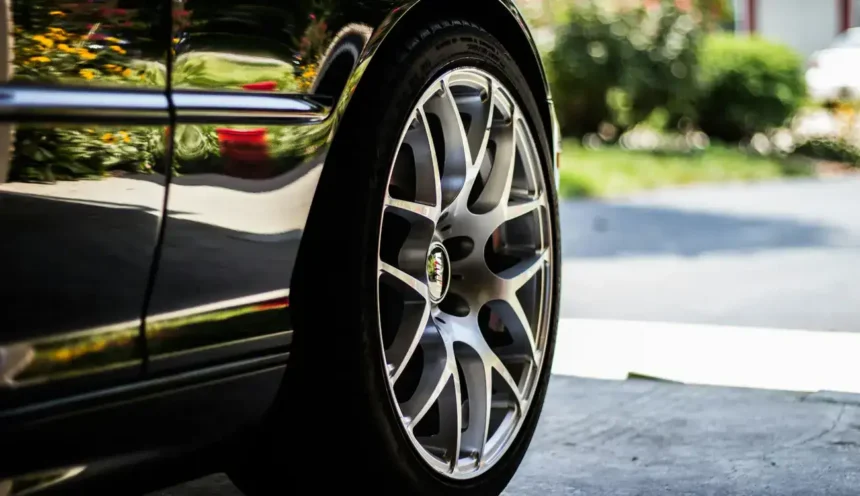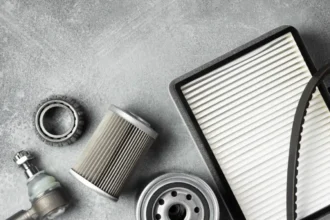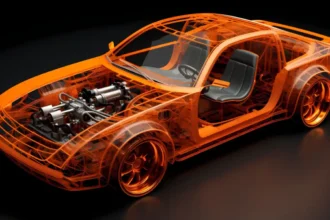Ever wonder how often you should check your tires? Or how tire care affects your car’s overall safety and performance? You’re not alone. Tire maintenance can seem tricky, but it’s essential to ensure your car runs smoothly, safely, and efficiently. In this comprehensive guide, we’ll walk you through everything you need to know about car tire maintenance, from checking tire pressure to rotating your tires, and much more.
Let’s dive into the details and give you the answers you need to maintain your tires like a pro.
Why Is Tire Maintenance Important?
Tires are the only contact between your car and the road. Proper tire care not only extends the life of your tires but also ensures optimal car performance, fuel efficiency, and safety. Worn-out or improperly maintained tires can lead to poor handling, longer braking distances, and even dangerous blowouts.
Signs You Need Tire Maintenance

Before we get into the maintenance steps, let’s start with the common signs that indicate your tires need attention:
- Uneven tread wear – Does one side of your tire seem more worn than the other?
- Vibration while driving – Feel a shake or shimmy on smooth roads?
- Tires losing air pressure frequently – Are you filling your tires more often than usual?
- Visible cracks or bulges – Do you see cracks in the tire rubber or bulges in the sidewall?
If you notice any of these signs, it’s time to focus on tire maintenance.
Essential Steps For Car Tire Maintenance
1. How to Check Tire Pressure Regularly
Why it matters: Maintaining the right tire pressure improves fuel efficiency, tire longevity, and safety. Underinflated tires wear out faster and make your car harder to handle.
How to Check:
- Use a tire pressure gauge – Check your tire pressure when the tires are cold.
- Find your car’s recommended PSI – This information is usually found in the owner’s manual or on a sticker inside the driver’s side door.
- Compare readings – Ensure that all four tires match the recommended PSI level.
Recommended Frequency:
- Check tire pressure once a month and before long trips.
| Tire Size | Recommended PSI (Average) |
|---|---|
| Small Cars | 30-35 PSI |
| SUVs | 35-40 PSI |
| Trucks | 40-45 PSI |
2. How to Inspect Tire Tread Depth
Why it matters: Tire tread provides grip and traction, especially on wet or slippery surfaces. Worn-out tread can make your car unsafe to drive.
How to Measure:
- Penny test – Insert a penny into the tire tread with Lincoln’s head upside down. If you can see the top of Lincoln’s head, your tread is too low.
- Tread depth gauge – For a more precise measurement, use a gauge. The tread depth should be at least 2/32 of an inch.
Recommended Frequency:
- Check tread depth every time you check tire pressure or at least once every few months.
| Tread Depth (Inches) | Tire Condition |
|---|---|
| 6/32 or more | Good |
| 4/32 – 5/32 | Monitor closely |
| 2/32 or less | Replace tires |
3. How to Rotate Your Tires
Why it matters: Tire rotation ensures even wear on all tires, extending their lifespan and improving handling.
How to Rotate:
- Front tires move to the back, and the rear tires go to the front, often with a swap from side to side (varies by car type).
Rotation Patterns:
- Front-Wheel Drive: Move the front tires straight to the rear, and cross the rear tires to the front.
- Rear-Wheel Drive: Cross the front tires to the rear, and move the rear tires straight to the front.
Recommended Frequency:
- Rotate your tires every 5,000 to 7,500 miles or during your oil change.
4. Balancing and Alignment
Why it matters: Proper tire balance and alignment prevent uneven wear, improve fuel efficiency, and ensure a smooth ride. Misalignment can cause your car to pull to one side, while unbalanced tires cause vibration.
How to Know if You Need Alignment:
- Your car pulls to one side while driving.
- You notice uneven wear on the tread.
Recommended Frequency:
- Get an alignment check every year or if you notice your car drifting.
5. How to Check for Tire Damage
Regular tire inspections help catch small issues before they turn into big, expensive problems. Look for:
- Cracks and punctures – Any small cracks or punctures should be checked by a professional.
- Bulges or blisters – These are often signs of internal damage and can lead to a blowout.
Recommended Frequency:
- Inspect for damage every time you fill up at the gas station.
6. When to Replace Your Tires
Even with excellent maintenance, tires don’t last forever. Here are the main indicators it’s time to get new tires:
- Low tread depth – Below 2/32 of an inch means it’s time for a replacement.
- Age – Tires older than 6 years should be replaced, even if the tread looks fine.
- Frequent loss of air pressure – If your tires lose air often, they could have internal damage.
How to Choose New Tires:
- Match your new tires to the type specified in your owner’s manual.
- Consider factors like tread design, durability, and performance when choosing replacements.
FAQs About Tire Maintenance
Q1. How often should I check my tire pressure?
A: At least once a month and before long trips to ensure optimal pressure.
Q2. How can I tell if my tires are worn out?
A: The simplest way is to check the tread depth with the penny test or a tread gauge. Also, look for cracks, bulges, or excessive wear on one side of the tire.
Q3. What happens if I don’t rotate my tires?
A: Not rotating your tires can lead to uneven wear, reduced lifespan, and even poor handling.
Q4. Can I drive with a small crack in my tire?
A: It’s not safe to drive with cracks or visible damage. Have your tire inspected by a professional as soon as possible.
Q5. What’s the best way to store tires if not in use?
A: Store them in a cool, dry place, out of direct sunlight. Lay them flat if they have rims, and upright if they don’t.
Conclusion
Tire maintenance is a critical part of overall car care. By staying on top of tasks like checking tire pressure, rotating tires, and monitoring tread depth, you’ll extend the life of your tires, improve your car’s performance, and keep yourself safe on the road. Regular attention to your tires saves you money and stress in the long run.
Remember, properly maintained tires mean a smoother, safer, and more efficient driving experience. So why wait? Start checking your tires today!








